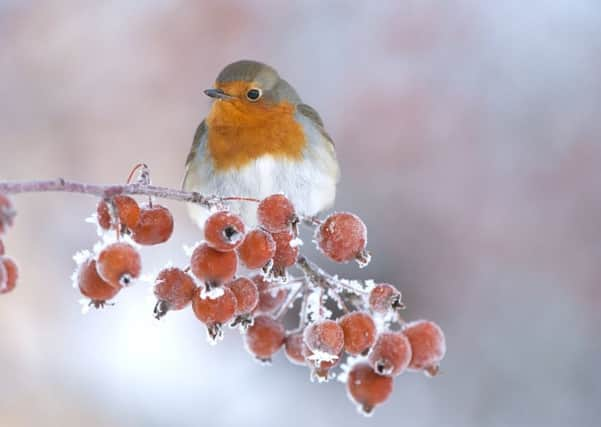Welcome wildlife to your garden this winter


Delay the winter tidy-up. Permission to relax! Seed heads on garden plants yield invaluable winter food for birds and small mammals while long stalks provide habitat for garden fauna.
Make a log pile. Most pruning or felling is done over winter, so it’s an opportunity to pile up some offcuts of logs or branches– ideal habitat for minibeasts and a refuge for field mice, voles, shrews or hibernating hedgehogs.
Advertisement
Hide AdAdvertisement
Hide AdBuy or construct wildlife homes. Bird boxes are easy, and you can construct minibeast hotels of various sizes and complexity. I was so excited to find my recently planted rose had been eagerly scalloped by leaf-cutter bees that I’m creating homes based on tubes sealed at one end, in the hope the bees will become resident. Try bundles of bamboo, fennel stalks, or drill holes into logs.
Plant more trees. Trees and shrubs provide essential cover for wildlife and nesting for birds, but those providing nuts or fruit (plus pollen and nectar in summer), are even better. Native hawthorn, blackthorn, crab, rowan and hazel satisfy this need, and if you grow your own fruit, you will know how popular plums, apples, cherries and blueberries are too. If you have no room for any more, consider your boundaries and add a selection of berrying trees and shrubs.
Dig a pond. Winter is a great time to create a pond or bog garden. Choose a site away from overhanging trees, in a natural hollow, making one area at least 60cm deep. It may even fill effortlessly with rainwater (best for pond-life) when winter rains come. Then wait for damselflies, pond skaters and frogs to come.
Hang up more feeders. Most of us do this; keeping them cleaned and well stocked with high-energy food is equally important, as small birds depend on this extra food to survive and stay warm. A blue tit needs on average to eat its body weight in food per day.
Advertisement
Hide AdAdvertisement
Hide AdAbove all, enjoy your garden and make it your own nature reserve.
In times of climate instability and habitat loss, that must be our aim.
Visit www.ulsterwildlife.org/wildlife-gardening for more information.